In diverse, conservative Willmar, Minnesota, immigration debate gets complicated quickly
Published in News & Features
WILLMAR, Minn. — This regional agricultural center is a study in contrasts. Flags adorn city streets welcoming people to Willmar in five languages, including Spanish, Somali and Karen, and 29 different languages are spoken in the diverse public school district.
On the city’s outskirts sits the county jail, one of only a handful in Minnesota with federal contracts to house detainees from U.S. Immigration and Customs Enforcement. It now holds more than any other in the state.
Sitting outside adjacent stalls in the Kandiyohi County Fairgrounds’ horse barn on a steamy recent morning, a man and a woman embodied how immigration politics hits differently in this west-central Minnesota county of 44,000 people.
The two shared many concerns: about big-city crime in their rural area, about an uncertain future for kids and grandkids, about how mass deportation could hurt the tight labor market here.
Where they diverged was the topic dividing much of America during President Donald Trump’s second term: immigration.
The man, a 71-year-old retiree and three-time Trump voter named Russ Steinhaus, applauded Trump’s increased immigration enforcement. He said illegal immigration costs America more than it can afford.
The woman, a sixth-grade math teacher in Willmar named Courtney Lee who voted for Kamala Harris, feared students could be hurt by family separations.
Here, immigration views come with nuance. The biggest supporters of Trump’s policies readily admit immigration has driven local growth; the biggest detractors see how demographic changes have jarred longtime residents.
Voters here have become increasingly conservative in recent decades. Trump beat Harris by more than 30 percentage points in 2024, with Republican margins increasing each election cycle since 2008, when Republican John McCain won the county by only 5 percentage points.
Waves of immigration — from Mexico, east Africa, Myanmar, and Central and South America — have changed the face of Willmar, the county seat and home to half the county’s population. It’s now one of the most diverse cities in greater Minnesota. The public schools are a third white, and a quarter of students are English language learners.
Many locals simultaneously decry illegal immigration while expressing sympathy for the hard-working immigrants who have made their lives here — legally or not. The Rev. Andrés Albertsen, pastor at Iglesia Luterana Paz y Esperanza in Willmar, estimated a majority of his heavily immigrant congregation voted for Trump, largely on economic or social issues.
According to a Star Tribune analysis of public data obtained through the Deportation Data Project, the Kandiyohi County jail housed 652 detainees over the first six months of Trump’s second term, more than any county jail in the state and almost double the same period in 2024.
At the horse barn, Steinhaus, who’d just returned from riding his Harley to Sturgis, drew a line between legal immigration, which he supports, and illegal immigration, which he’s “dead-set against.” He blames illegal immigration for increased crime and government spending.
Yet he knows illegal immigration props up this agricultural economy. The county is the top turkey producer in the the nation’s top turkey-producing state. With a county unemployment rate of just 4.3%, and with agriculture one of the nation’s industries most reliant on foreign-born noncitizen workers, he’s not blind to immigration’s economic impact.
“If they were all deported, we’d probably be in trouble with getting labor,” Steinhaus said.
In the stall beside him, Lee, the teacher, said problems with the immigration system have been evident for years, with an onerous process to legally immigrate leading to a spike in illegal immigration. Since Trump’s inauguration, she’s heard of immigrants receiving letters telling them to self-deport, and of legal immigrants unable to renew visas.
“It’s different when you actually sit down and work with these communities,” she said. “You can’t fault somebody trying to find a better life for themselves.”
A place to fit in
When Jenny Groen left her hometown of Willmar, she assumed she’d never move back. She wanted a diverse community, and when she graduated from high school in 2001, Willmar was not that. She moved to California and later to Haiti, where she and her husband adopted four Haitian children. Only after Haiti’s devastating 2010 earthquake did they return to Willmar.
“Our city had just completely changed,” said Groen, area programs manager for Arrive Ministries, a resource center for refugees and immigrants. “We wanted a place our kids belong and fit in.”
Those changes haven’t been universally lauded. What had been a dying downtown now bustles with multicultural businesses — Chaw’s Asian Market a few blocks from Mubarak Food & Grocery, Somali restaurants a stone’s throw from Mexican and Honduran restaurants.
But some longtime residents tell Groen they fear the new downtown. Local talk during the 2016 presidential election focused on fear of Somalis and sharia law, she said; this election, it focused on Hispanic immigrants and crime.
Groen sees a theme: Fear toward new immigrants in general is accompanied by an embrace of specific immigrant families. The same people railing against illegal immigration change their tune talking about an immigrant neighbor.
ICE raids haven’t happened in Kandiyohi County, but immigration advocates here say several families left the country voluntarily after receiving deportation notices. Some have had work permits taken away. Many feel they are in a legal gray area, Groen said, awaiting court dates as they digest the changing face of immigration enforcement.
Others just worry. Jaqueline and Jorge, undocumented immigrants who came to Willmar with their toddler last year after fleeing violence in Guatemala, have a date in immigration court, but it’s not until next year. (They asked their last names not be used for fear of reprisal.)
“Every day we are afraid they are going to close our immigration case,” Jaqueline said in Spanish. “Our dreams are on pause right now.”
Jaqueline babysits children in their apartment. Jorge works in construction on grain elevators. “I just want a better life for my daughter, an American education,” he said in Spanish.
Albertsen, the pastor of the Hispanic church, came to the U.S. from Argentina legally in 2011 to study at Luther Seminary in St. Paul. He became a U.S. citizen a month before Trump’s inauguration.
He said some congregants who voted for Trump have admitted the scale of national deportations is worrisome.
They “only thought criminals would be deported,” he said. “You don’t think those you care about would be in any danger. Unfortunately this is happening, even when it’s not happening in our area.”
Willmar is the rare small town whose population has increased with every census since 1880. James Miller, president of the Willmar Lakes Area Chamber of Commerce, attributes recent growth to immigration. Locals say the constant influx of new immigrants here has ceased under Trump.
“You’ve got a lot of opposites at play here,” he said. “From the business community standpoint, it’s how do we fix immigration so it works the way it should? So that these families who want to come here, who want to work, who want to better their families, have that opportunity to do so the right way and in a way that isn’t onerous.”
‘Rules for a reason’
Surrounded by chain-link fences and concertina wire, the Kandiyohi County jail sits just across Highway 71 from the ice rink and Willmar Senior High School.
Most county residents asked by the Minnesota Star Tribune did not know their county housed more ICE detainees than any jail in the state. Those who did know were either proud of the county’s role in federal immigration enforcement or unperturbed.
The sheriff declined to comment how increased immigration enforcement has changed county life or jail operations.
But Albertsen, the Hispanic pastor, saw the jail as emblematic of the area’s contradictions: “We praise ourselves for being a welcoming town, then we’re making money off ICE detainees.”
At the fair a few miles away on the banks of Foot Lake, the smell of funnel cakes and bacon swirled as carnival rides revved up for the day: the Screamer, the Sizzler, the Tilt-a-Whirl. Nearby was a parent’s worst nightmare: a carnival game whose prize was a live goldfish.
Donna Schmitt, 70 of New London, sold red “Make Minnesota Great Again” hats and shirts at the county Republicans’ booth.
Schmitt was happy deportations have increased under Trump, but stressed that she isn’t against legal immigration. She has friends who immigrated legally and became U.S. citizens. Illegal immigration isn’t fair to them, she said.
“There are rules for a reason,” Schmitt said. “Just because someone has lived here for 10 years, they’ve always known they are illegal.”
Willie Gonzalez, a founder of the Latino Community Association of Willmar, set up his mechanical bull near the fair entrance: $5 for unlimited rides. Although the area overwhelmingly voted for the presidential candidate promising mass deportation, Gonzalez believes his neighbors see Latinos as part of what makes Willmar great.
“I’ve talked with a lot of white, conservative Trump voters around this fair,” he said. “A bunch of them said some version of, ‘We don’t want illegal immigration; we think the guys who commit awful crimes need to be deported. But the guy who doesn’t have his papers, he works hard and he raises his family and he’s been here 10 years — he’s OK.’"
At the 4-H llama and alpaca show, Gary Stai, 72, who raises livestock north of Willmar, watched 10 of his grandchildren show animals. Stai was born and raised here. Every fall, he hauls dirt from the sugar beet piler plant and works with Hispanic immigrants.
He leans right politically, though he can’t name a modern politician he actually likes. He doesn’t love America’s direction: Smartphones are making kids dumb, government spending is reckless, Trump tariffs could hurt farmers.
He draws a line between the bad immigrants and the good ones — a line that isn’t drawn at their legal status. Immigrants who bring drugs to America? Stai wants them in Salvadoran prisons.
“But the ones who are here to better themselves,” he said, “I welcome them.”
____
Karina Kumar of the Minnesota Star Tribune contributed to this story.
____
©2025 The Minnesota Star Tribune. Visit at startribune.com. Distributed by Tribune Content Agency, LLC.
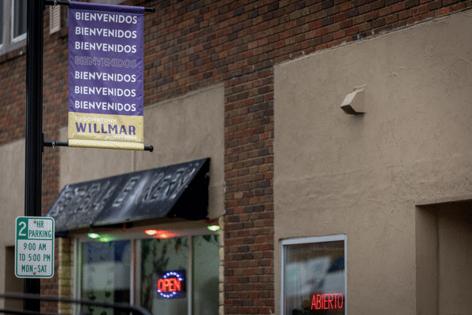
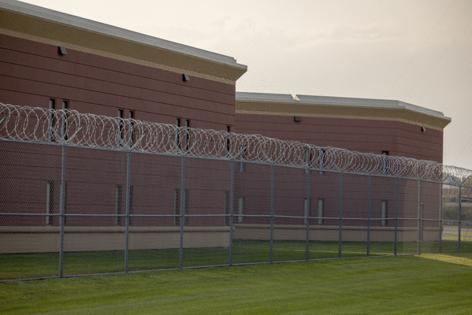
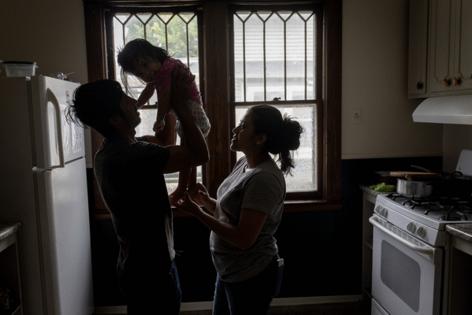
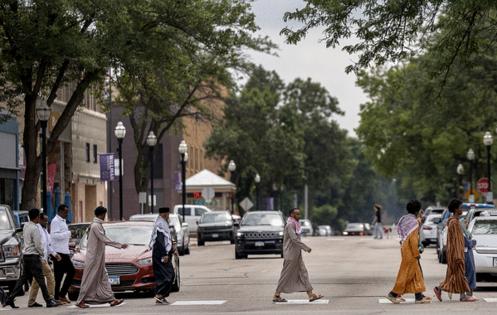
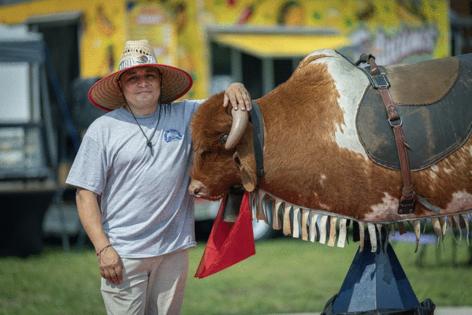










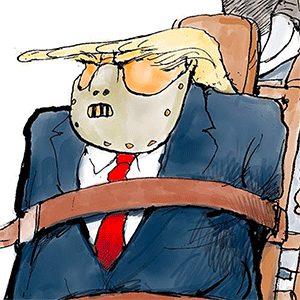
Comments